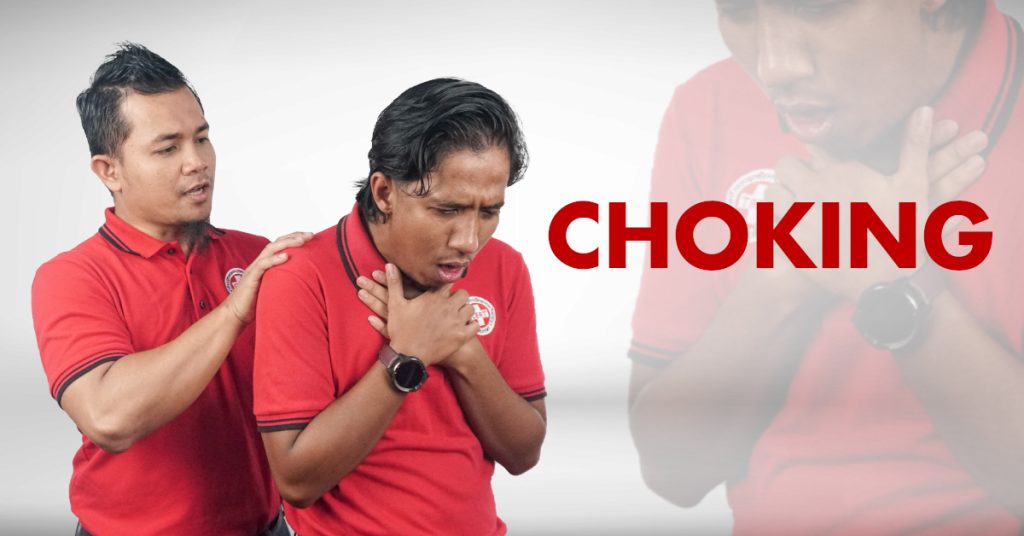Introduction
Airway obstruction occurs when something blocks the passage of air into the lungs, creating a potentially life-threatening emergency that requires immediate action. Whether caused by a foreign object, allergic reaction, or medical condition, recognizing and responding to airway obstruction can mean the difference between life and death. This comprehensive guide examines the causes, symptoms, and critical interventions for airway obstruction across different age groups. Understanding these essential skills empowers everyone to respond effectively when faced with this medical emergency.
Understanding Airway Obstruction
Airway obstruction prevents normal breathing by blocking the flow of air through the respiratory tract. This blockage can occur in the upper airway (nose, mouth, throat, or voice box) or the lower airway (windpipe or bronchial tubes). Obstructions can be partial, allowing some air to pass, or complete, which prevents any air movement and demands immediate intervention.
Types of Airway Obstruction
Mechanical obstruction typically involves a physical object blocking the airway. Common examples include:
- Food particles (especially nuts, grapes, hot dogs, and candy)
- Small toys or objects for children
- Dentures or dental appliances in adults
- Vomit or bodily fluids
Physiological obstruction relates to medical conditions that cause airway narrowing or closure:
- Anaphylaxis (severe allergic reaction)
- Epiglottitis (inflammation of the tissue covering the windpipe)
- Croup (viral infection causing swelling around the vocal cords)
- Tumors or growths in the airway
- Throat swelling from burns or injuries
Recognizing Airway Obstruction
Early recognition of airway obstruction is crucial for prompt intervention. The signs and symptoms vary depending on whether the obstruction is partial or complete.
Signs of Partial Airway Obstruction
When the airway is partially blocked, the person may:
- Make wheezing, whistling, or high-pitched sounds while breathing
- Cough forcefully
- Appear anxious or agitated
- Have difficulty speaking
- Breathe with increased effort
- Experience noisy breathing
Signs of Complete Airway Obstruction
A completely blocked airway presents with more severe symptoms:
- Inability to speak, breathe, or cough
- Universal choking sign (hands clutched at the throat)
- Blue or gray skin discoloration, particularly around the lips and under the nails (cyanosis)
- Panic or distress
- Loss of consciousness (in advanced stages)
Emergency Response for Adults and Children Over 1 Year
When an adult or child over one year of age experiences airway obstruction, follow these evidence-based steps:
For Conscious Victims
- Assess the situation: Determine if the person can cough, speak, or breathe. Ask, “Are you choking?” If they can cough forcefully, encourage them to continue coughing to clear the obstruction.
- Perform abdominal thrusts (Heimlich maneuver) if the person cannot cough, speak, or breathe effectively:
- Stand behind the person and wrap your arms around their waist
- Make a fist with one hand and place it just above the person’s navel
- Grasp your fist with your other hand and press hard into the abdomen with quick, upward thrusts
- Continue until the object is expelled or the person becomes unconscious
- For pregnant women or obese individuals: Position your hands at the center of the chest rather than the abdomen.
For Unconscious Victims
If the person becomes unconscious:
- Carefully lower them to the ground
- Call emergency services (911) immediately
- Begin CPR, starting with chest compressions
- Check the mouth for visible obstructions before giving rescue breaths
- Continue CPR until emergency services arrive
Airway Obstruction in Infants (Under 1 Year)
Infants require different techniques due to their smaller size and delicate anatomy.
For Conscious Infants
- Support the infant: Hold the infant face down along your forearm, supporting their head and jaw with your hand, and keep their head lower than their trunk.
- Deliver back blows: Using the heel of your hand, give five firm back blows between the infant’s shoulder blades.
- Perform chest thrusts: If back blows are unsuccessful, turn the infant onto their back while supporting their head.
- Place two fingers at the center of the infant’s chest just below the nipple line
- Give five quick downward chest thrusts, about 1½ inches deep
- Alternate between five back blows and five chest thrusts until the object is expelled
For Unconscious Infants
If the infant becomes unconscious:
- Begin infant CPR with chest compressions
- Check for visible obstructions before giving rescue breaths
- Continue CPR while waiting for emergency services
Special Considerations for Different Age Groups
Elderly Individuals
Older adults face unique challenges with airway obstruction:
- Higher risk due to decreased muscle tone and swallowing difficulties
- Conditions like stroke or Parkinson’s disease may increase choking hazards
- Dentures can complicate both the choking risk and rescue techniques
People with Disabilities
Individuals with certain disabilities may require adapted approaches:
- Those with mobility limitations may need modified positioning for effective intervention
- Communication barriers might delay the recognition of choking
- Some neuromuscular conditions increase aspiration risk
Prevention Strategies
Preventing airway obstruction is always preferable to emergency intervention:
Food Safety Practices
- Cut food into small, manageable pieces, especially for children and elderly individuals
- Avoid high-risk foods for young children (hot dogs, grapes, nuts, hard candy)
- Encourage thorough chewing and discourage talking or laughing while eating
- Supervise young children during meals and snacks
Environmental Safety
- Keep small objects out of reach of infants and toddlers
- Regularly check toys for loose or broken parts
- Follow age recommendations on toy packaging
- Monitor children during play, especially with small objects
Medical Considerations
- Follow medication administration guidelines carefully
- Be aware of conditions that increase choking risk
- Consider modified food textures for individuals with swallowing difficulties
- Consult with healthcare providers about specific precautions for high-risk individuals
Advanced Airway Management Techniques
In healthcare settings or for trained professionals, additional interventions may include:
- Suction devices: Used to remove liquid obstructions or secretions
- Laryngoscopy: Direct visualization of the throat to locate and remove obstructions
- Advanced airway adjuncts: Tools like oropharyngeal airways or endotracheal tubes to secure breathing
- Surgical airway: In extreme cases, a cricothyrotomy or tracheostomy may be necessary to establish an airway
When to Seek Medical Attention
Always seek immediate medical care after any choking incident if:
- The person experienced a loss of consciousness
- The obstruction was not easily resolved
- Breathing difficulties persist after the obstruction is removed
- There is persistent pain or difficulty swallowing
- There is concern that part of an object remains lodged in the airway
The Importance of Proper Training
While this article provides essential information about airway obstruction management, there is no substitute for proper hands-on training. Certified courses provide supervised practice with feedback, building the confidence and muscle memory needed to act decisively in an emergency.
Call to Action
Don’t wait for an emergency to learn these life-saving skills. Get certified today through CPR Cincinnati, an American Heart Association training site offering comprehensive, stress-free, and hands-on courses in emergency response.
For healthcare professionals, PALS certification in Cincinnati provides specialized training in pediatric advanced life support, including airway management techniques for infants and children. CPR certification Cincinnati courses teach essential skills for responding to choking and other emergencies in people of all ages.
CPR Cincinnati offers initial certifications and renewals in BLS for Healthcare Providers, ACLS, PALS, and CPR and First Aid courses. All classes are designed to be stress-free and provide practical, hands-on experience to build your confidence in emergencies.
Contact the best CPR classes in Cincinnati today to schedule your certification or renewal course and gain the skills that could help you save a life when every second counts.
Conclusion
Airway obstruction requires immediate recognition and appropriate intervention. By understanding the signs of choking and knowing the proper response techniques for different age groups, you can be prepared to act quickly and effectively in an emergency. Remember that prompt action is essential—when someone is choking, every second counts. While prevention is always the best approach, being prepared with the right knowledge and training ensures you can respond confidently if an airway obstruction occurs.





